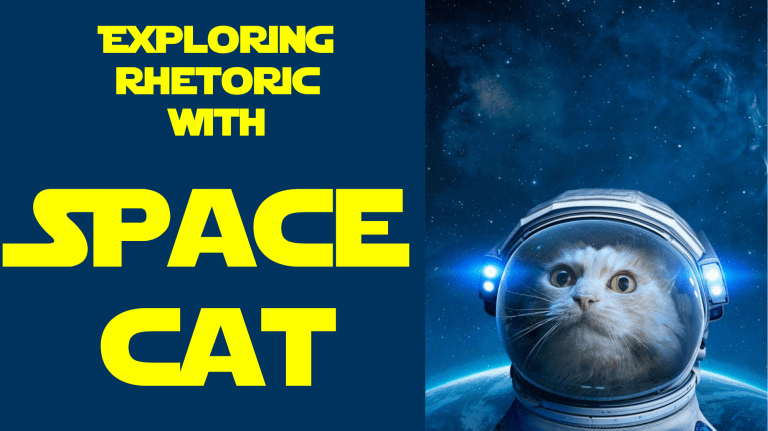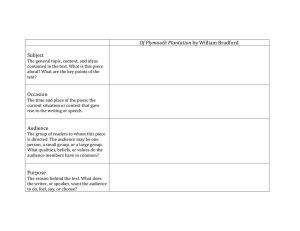
Exploring Rhetoric with Space cat Speaker • Who wrote this? • What do we know about them? • What DON’T we know about them? • Does this text have a particular meaning because of WHO wrote/said it? • Examples: A President giving a speech, a citizen sending a Tweet, a newspaper staff writing an editorial Purpose • What is the speaker hoping to accomplish by putting this out into the world? • Remember that the message itself ≠ the purpose. • Examples: to inform, to persuade , to inspire, to convince Audience • Who was the actual audience of this text? Was that the intended audience? • What did the speaker assume about their audience? How does that impact what they say and how they say it? • Examples: TV viewers watching a debate, readers of a newspaper, a crowd gathered at a rally context • What was going on in the world when this text was produced? • What were the biggest issues on the speaker’s mind, which they might be directly or indirectly addressing? • How would this same text be received differently by a different audience in or in a different time? • Examples: MLK’s “I Have a Dream” Speech is given in the context of the Civil Rights Movement exigence • Why “NOW” for the speaker? • What was the spark or catalyst that moved the speaker to act? • Note that context is “happening” all the time, but usually an event serves as exigence. • Examples: The #MeToo movement taking off after high profile reports of misconduct choices • This is a CAT-egory of all the little moves authors make to enrich their writing. • Why does the writer make each choice? • Examples: a speechwriter may begin with an anecdote, then move to describing a process of change, and end with a call to action. appeals • Appeals to ethics or credibility • Appeals to emotion • Appeals to logic or reason • Examples: Bringing up one’s expertise with the topic (credibility), telling a moving story (emotion), stating facts or statistics (logic) tone • What is the speaker’s attitude at different places throughout the text? • How can you tell this is their attitude? • Where does the tone shift in the piece? • Examples: A religious eulogy may begin with a mournful tone, then move into a comforting or inspirational tone. When to use space cat? • Rhetorical analysis requires you to read and understand what matters about a text (SPACE) and comment on what specific features make it rich or effective (CAT). • Don’t panic when exploring a new or difficult text… SPACE CAT will guide you into the unknown!


